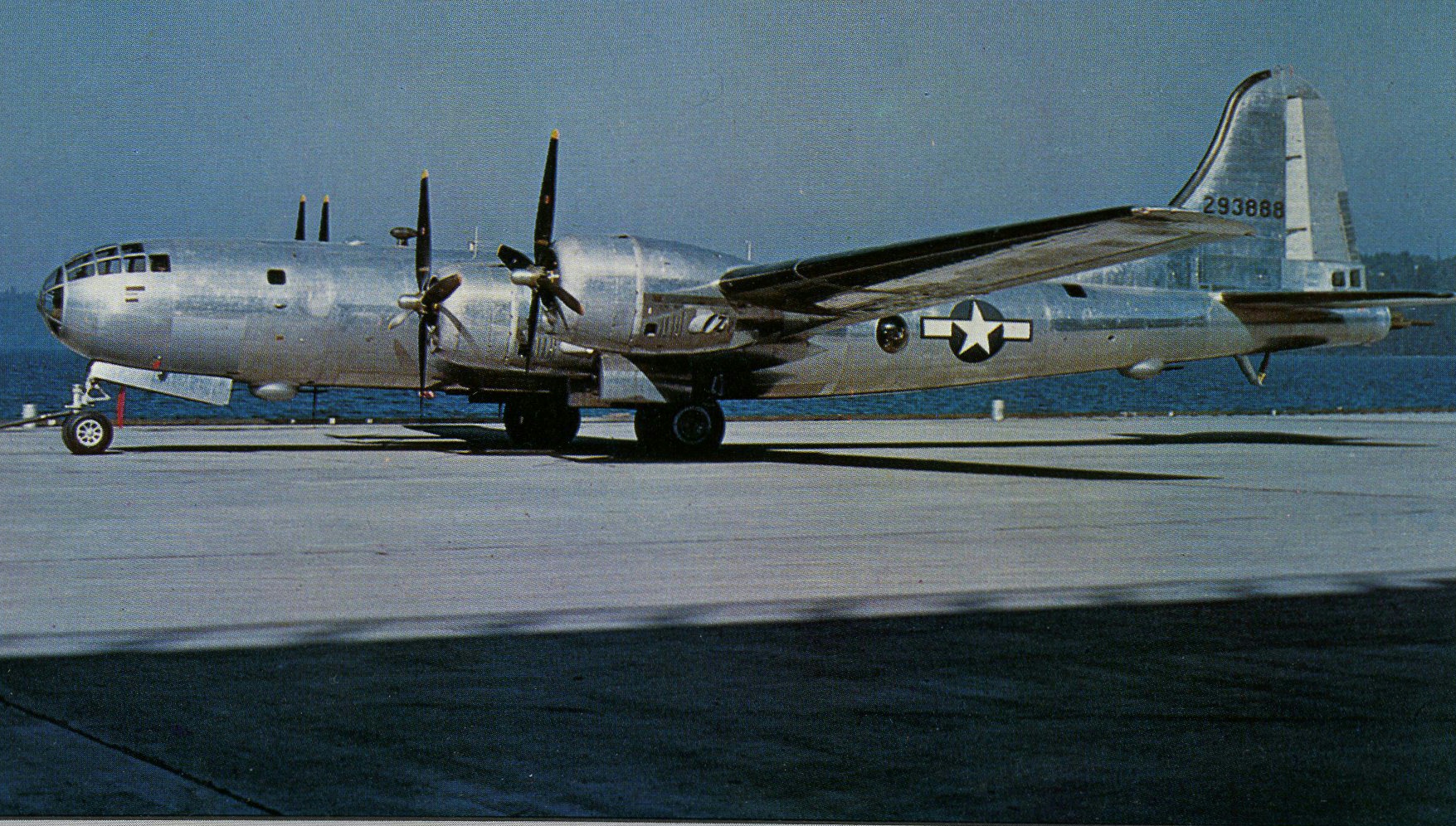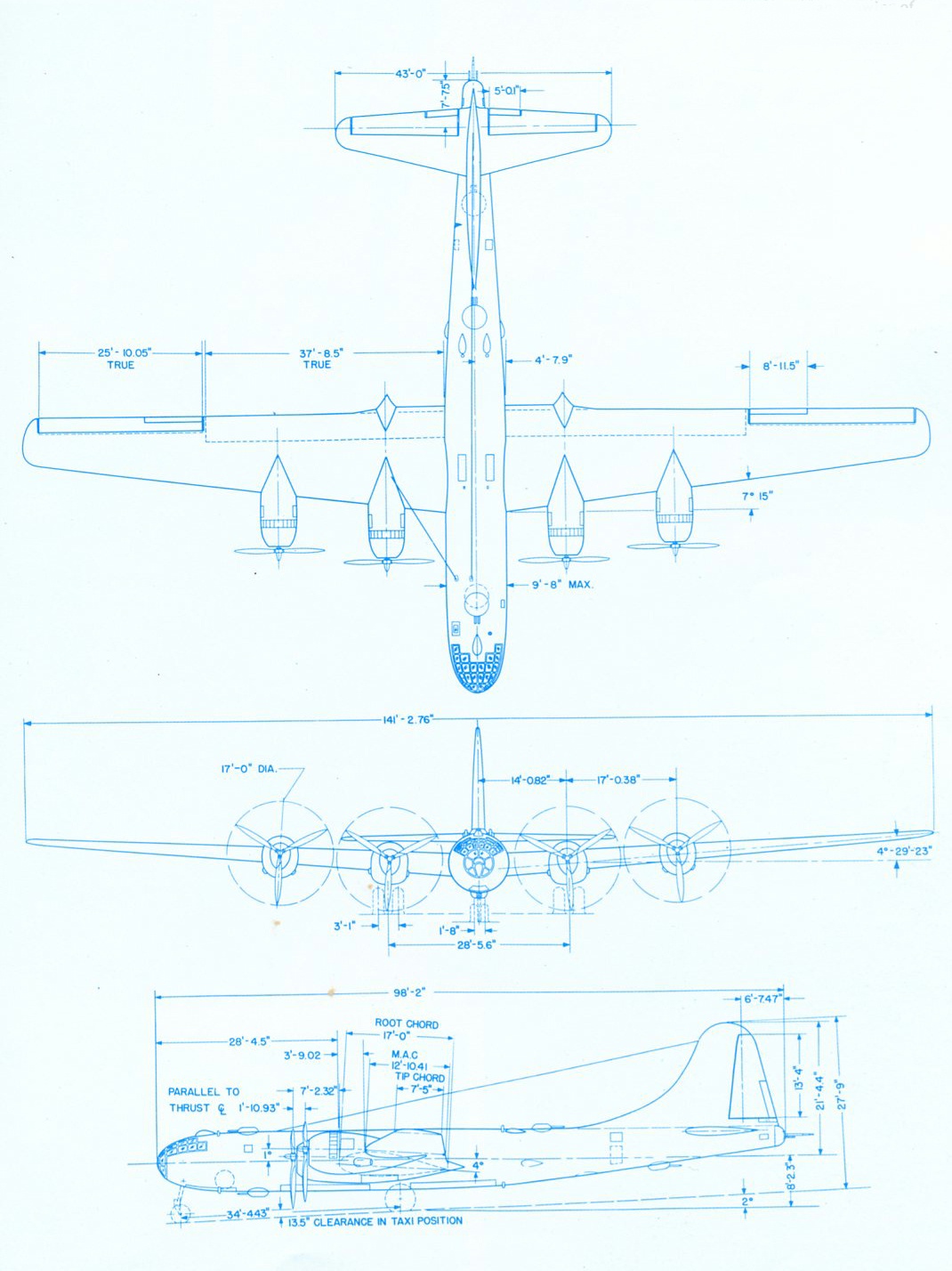History of the B-29
A B-29 weighed 130,000 pounds fully loaded. It was designed to fly above 30,000 feet. The B-29 was pressurized and heated, which was a huge advantage over the B-17 and other predecessor aircraft. It had five gun turrets with a total of twelve .50 caliber machine guns and a 20 mm cannon. The range was 3,250 miles at 25,000 feet with a 5,000 pound bomb load.
The B-29 flew with a crew of 11 (pilot, copilot, flight engineer, navigator, bombardier, radio operator and gunners). The maximum speed of the four 2,200 horsepower engines was 375 mph, with a cruise speed of between 200 and 250 mph.
During the South Pacific B-29 campaign against the home islands of Japan, there were 576 B-20 crew members who lost their lives and 2,400 crew members listed as missing in action. Many of those missing were killed by the Japanese after bailing out of their planes.
Initially bombing missions over Japan for the B-29s were conducted at about 31,000 feet, allowing them to fly above enemy flak and some of the Japanese fighter planes. That did not work well due to the force of the jetstream, which dumped bombs all over Japan instead of specified targets. General Curtis E. LeMay decided to pull the B-29s down to lower altitudes of between 4,900 and 9,200 feet. This tremendously improved the effectiveness against bombing targets, but also exposed the B-29s to significantly increased risk of being shot down.
B-29 missions continued until August 13, 1945 shortly after B-29s dropped atomic bombs over Hiroshima and Nagasaki, resulting in Japan’s unconditional surrender on September 2, 1945. By then a total of 23,500 individual aircraft sorties had been flown with 170,000 tons of conventional ordinance and two atomic bombs dropped. In the process, 528 B-29 bombers were destroyed between April 1944 and August 1945…21% of the 2,513 planes built. Yet their loss had saved enormous casualties and countless lives, as it eliminated the necessity for a full-scale invasion of Japan.






